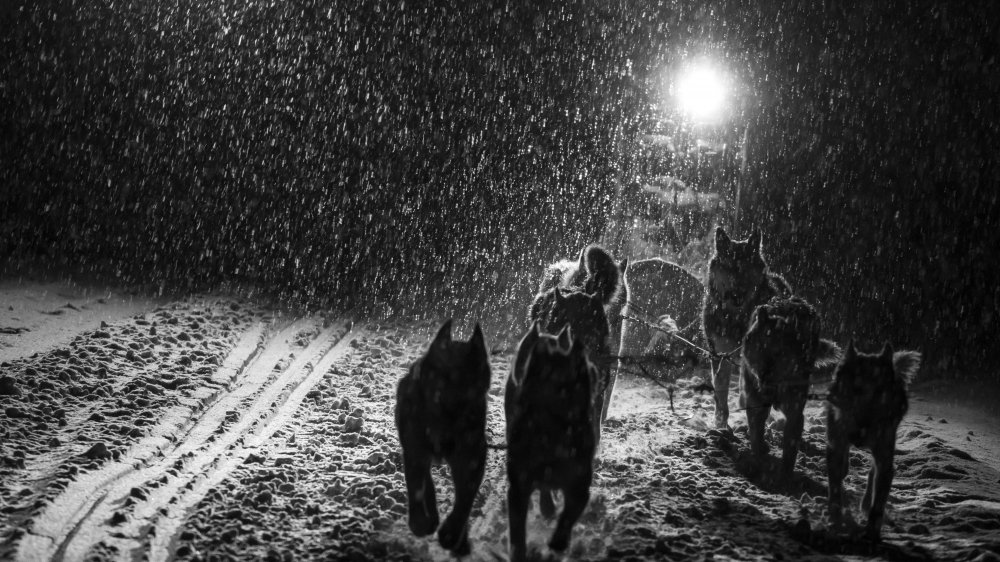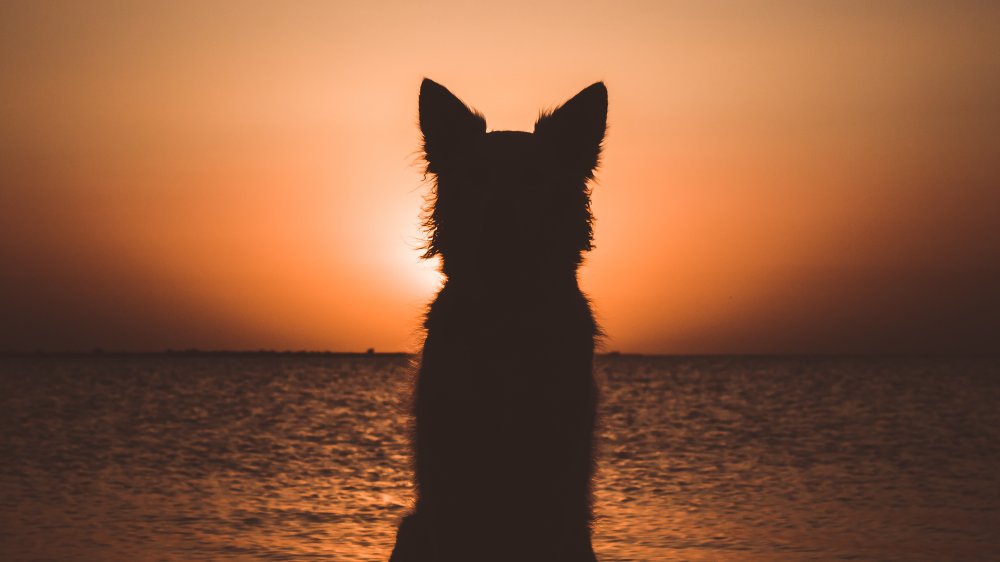Do Dogs Really Have Night Vision?
"Dogs can't see color." It's one of those things you learn as a kid and then take with you, unquestioningly, for the rest of your life. Like so many animal tall tales, such the whole "cows always sleep standing up" thing — they can lightly doze on their feet, according to National Geographic, but have to lie down to truly sleep — there is a small fraction of truth that this "fact" is derived from, and a lot of exaggeration. Dogs have fewer color-detecting cone cells in their eyeballs than human beings, per Business Insider, meaning they can only observe vague shades of one or two colors. Nobody's quite sure which two, though some experts suspect it's blue and yellow, but either way, this clearly robs them of the chance to experience a Michael Bay movie in all its orange and indigo majesty.
Before you get all up on your high horse, taking verbal jabs at your Boston terrier for having dumber eyesight than you, you should know that your canine companion still has you beat in a couple of ways, optometrically speaking. Dogs' eyes are better at detecting motion, can see further ... and, it turns out, grant them pretty impressive night vision.
Fido sees you when you're sleeping
It all comes down to a couple of fascinating biological factors. While dogs are lacking in the cone department, their eyes have a spectacular number of rods, the cells that allow eyes to detect motion. It's why scientists theorize that dogs see videos as a series of individual, flickering images rather than a single flowing display. It also means that, as Business Insider points out, they can have trouble recognizing you when you're standing still. They see objects and creatures better when the subject is in motion, meaning that your dog now has two things in common with the T-Rex from Jurassic Park, if you count the time he ate a goat in front of some kids.
Pooches, like many domesticated animals with good night vision, also possess an extra chunk of tissue in their eyes called a tapetum lucidum, as explained by Science Direct. This add-on helps to reflect light back into the retina when it's not absorbed normally, allowing for even better low-light vision. Combine this with dogs' giant, pleading pupils, and they're basically capable of recreating that Buffalo Bill scene from the end of Silence of the Lambs with you, any time you get up to use the bathroom at night. Good luck ever trusting them again.

